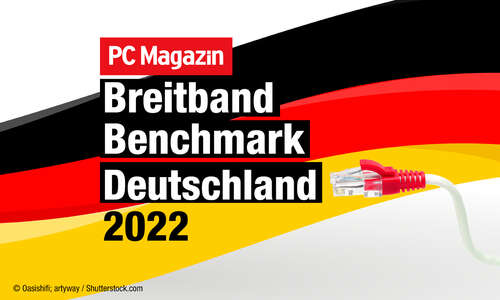Tech
Broadband Benchmark 2022 – Germany: Looking for the providers with the best internet experience

- Broadband Benchmark 2022 – Germany: Looking for the providers with the best internet experience
- Broadband Benchmark 2022 – Germany: Test Results
- Broadband benchmark 2022 – Germany: This is how we tested it
It seems to be slowly getting rolling in this country too: the fiber optic express. According to current figures from the industry association BREKO, the glass fiber quota is now 26%. Specifically, that means: round 12.7 million Households, authorities and companies already have one FTTH/FTTB connection or are at least within close range of a usable fiber optic connection.
As a rule, the optical fibers are then in the street that leads past the building. In this context, experts also speak of “homes passed”. Another number nourishes the hope of broadband Internet times. With the third largest increase in expansion Germany currently behind France and Great Britain in Europe on the third rank.
And the customers? They seem to be discarding their reservations and recognizing the added value of a future-proof FTTH/FTTB connection. The number of booked fiber optic tariffs is over in the past year 35.8% grown. On the other hand, the share of fiber optic connections is still at a manageable level at 2.6 million.
For comparison: According to the Federal Network Agency, at the end of 2021 the number of active broadband cable connections in households was 8.8 million. With 25.4 million is the dominance of xDSL technologies, which are based on the Internet connection via conventional copper lines, continue unabated. These figures reflect the status quo in the fixed-network present, which is the focus of our broadband benchmark.
Our test partner umlaut examines the overall performance from the user’s point of view
In general, the broadband benchmark does not distinguish between the access technologies, the booked tariffs and the equipment. The applied crowd test and analysis method considers the overall constellation.
The main question was which one internet services households and businesses 03/28/2022 to 09/11/2022 have actually used via their landline access and which ones data rates and runtimes have been possible on the Wi-Fi networks of the users on site. To the Speed Test KPIs (Khey Pperformance Indicators) count the transmission speeds in Download and upload direction.
The actively initiated measurements of the data rates and runtimes were weighted higher in the evaluation by umlaut because they show the overall internet performance that was available in the Wi-Fi networks during the six-month test period.
Stability was one of the KPIs reviewed this time. In doing so, umlaut determines the success rates for connection setup, speed measurements and website calls. With these innovations, umlaut has expanded its benchmark procedure. In addition, the set of rules (framework) is adapted year after year to technological developments and the ongoing network expansion.
Detailed information on the test procedure and the evaluation
Broad database: The broadband benchmark is based on more than 37.1 million measurement samples
Our broadband benchmark is based on an internationally proven one crowdsourcing process. What is special about it: thanks to the user-side analyses, many landline access lines, including those that are widespread across the country, are included in the evaluation. Alone from them four examined, nationwide represented internet providers – 1&1/Versatel, Deutsche Telekom, O2 Telefónica and Vodafone – survived umlaut 34.2 million measurement samples to disposal.
If you count the six regional landline operator (German fiber optics, EWE, M-Net, Net Cologne, PŸUR/Tele Columbus and Wilhelm.tel) are over 37.1 million test samples got together. Overall, for a realistic assessment of the overall Internet services over 420,000 stationary broadband accesses are taken into account.
From the user’s point of view, who offers the best Internet experience in Germany and in the federal states?
The nationwide evaluation documents which Overall internet performance the users of their examined, Nationwide Internet Service Providers (ISP) have received. Due to the high number of stationary broadband accesses checked, reliable statements on the provided Internet experience are also possible at country level.
Depending on the federal state, the regional fiber optic network operators also play an important role. the regional table lists for every state the ISP that performed best in the broadband benchmark.
In a further evaluation, umlaut examined the fixed network Internet providers with a view to the reliability examined again separately. This aspect should be of particular interest to users who can do without the highest data rates and short runtimes in favor of lower costs because they mainly use standard applications such as e-mail, Internet surfing, online shopping and HD video streaming anyway.

